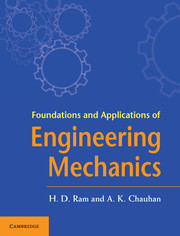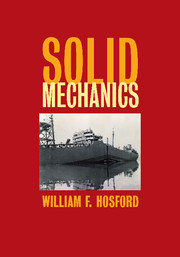Foundations and Applications of Engineering Mechanics
Engineering mechanics is the branch of engineering that applies the laws of mechanics in design, and is at the core of every machine that is designed. This book offers a comprehensive discussion of the fundamental theories and principles of engineering mechanics. It begins by explaining the laws and idealization of mechanics, and then establishes the equation of equilibrium for a rigid body and free body diagram (FBD), along with their applications. Chapters on method of virtual work and mechanical vibration discuss in detail important topics such as principle of virtual work, potential energy and equilibrium and free vibration. The book also introduces the elastic spring method for finding deflection in beams and uses a simple integration method to calculate centroid and moment of inertia. This volume will serve as a useful textbook for undergraduates and engineering students studying engineering mechanics.
- Discusses fundamental principles in simple language and analyses various methods/alternatives for solving problems
- Provides simple integration instead of double and triple integrals for finding moment of inertia
- Presents the elastic spring model for finding deflection in elastic systems
- Additional resources include lecture slides and a solutions manual for instructors
Product details
No date availablePaperback
9781107499836
646 pages
240 × 180 × 26 mm
0.92kg
Table of Contents
- Preface
- Acknowledgments
- List of abbreviations
- 1. Mechanics
- 2. Friction
- 3. Shear force and bending moment
- 4. Truss
- 5. Central points and moment of inertia
- 6. Kinematics of particle and rigid body
- 7. Kinetics of particle and rigid body
- 8. Method of virtual work
- 9. Mechanical vibration
- 10. Simple stress and strain
- 11. Bending and shear stresses in beams
- 12. Torsion of circular shaft
- Rules for using SI units
- Bibliography
- Index.








